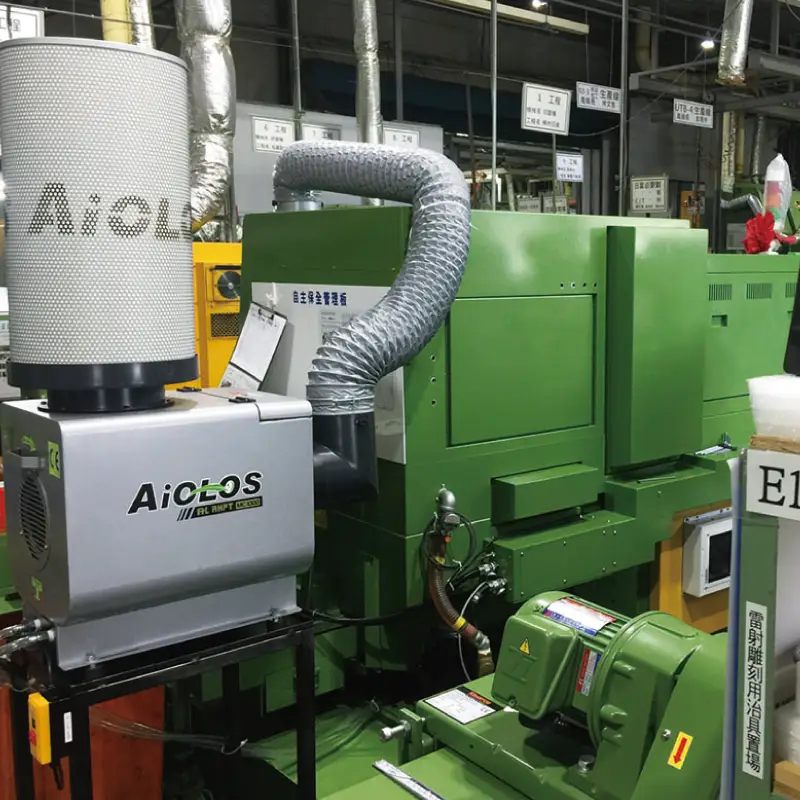How Do Oil Mist Collectors Work? 3-Minute Guide to Core Filtration Technologies
Modern manufacturing environments, especially those utilizing CNC machines, grinding equipment, or high-speed machining tools, generate significant amounts of oil mist. This airborne mixture of coolant fluids and lubricants poses health risks to workers and damages machinery over time. Oil mist collectors are critical industrial filtration systems designed to capture and neutralize these contaminants. In this article, we break down how oil mist collectors operate and explore the core filtration technologies that make them effective.
1. The Problem: Why Oil Mist Collection Matters
Oil mist forms when machining fluids aerosolize during high-speed operations. Without proper control, these tiny droplets (ranging from 0.1 to 10 microns) linger in the air, leading to:
- Respiratory issues for workers exposed to prolonged inhalation.
- Slippery floors and fire hazards due to oil accumulation.
- Reduced equipment lifespan from clogged components.
An oil mist collector tackles these challenges by actively filtering contaminated air, ensuring compliance with workplace safety standards like OSHA regulations.
2. Basic Operation: The 3-Step Filtration Process
Oil mist collectors operate through a systematic three-stage process:
Stage 1: Air Intake and Pre-Filtration
Contaminated air is drawn into the collector via a high-efficiency fan. The first line of defense is a pre-filter or mesh screen, which captures larger particles (above 10 microns) and prevents them from overburdening downstream filters. This stage also utilizes centrifugal force in some designs, where spinning blades throw heavier droplets toward the collector’s walls for drainage.
Stage 2: Multi-Layer Mechanical Filtration
The air then passes through a series of specialized filters:
- Fiberglass filters: Trap mid-sized particles (1–10 microns) through inertial impaction and interception.
- High-efficiency coalescing filters: Force smaller droplets (0.3–1 micron) to merge into larger ones, which then fall into a drainage tank.
These mechanical filters are often layered to maximize particle capture while maintaining airflow efficiency.
Stage 3: Advanced Purification (Optional)
For ultra-fine particles or fumes, systems may include:
- Electrostatic precipitators: Ionize particles, causing them to stick to charged plates.
- HEPA/ULPA filters: Capture 99.97% of particles as small as 0.3 microns.
- Activated carbon filters: Neutralize odors and volatile organic compounds (VOCs).
Clean air is finally recirculated into the workspace or safely exhausted outdoors.
3. Core Filtration Technologies Explained
The effectiveness of an oil mist collector hinges on its filtration mechanisms. Let’s dive deeper into the most widely used technologies:
A. Centrifugal Separation
Often the first line of defense, centrifugal separators use rotational motion to separate oil mist from air. As contaminated air enters a spinning chamber, centrifugal force pushes heavier droplets outward. These droplets coalesce on the chamber walls and drain into a collection tank, while cleaner air moves to the next stage. This method excels at handling high volumes of large droplets with minimal energy consumption.
B. Mechanical Filtration
Mechanical filters rely on dense media (e.g., fiberglass, synthetic mesh) to physically block particles. Key subtypes include:
- Depth filters: Use thick, porous materials to trap particles throughout their structure.
- Pleated filters: Increase surface area for higher dust-holding capacity.
These filters require regular replacement but are cost-effective for moderate contamination levels.
C. Electrostatic Precipitation
Ideal for sub-micron particles, electrostatic precipitators (ESPs) ionize oil mist using high-voltage electrodes. Charged droplets are then attracted to oppositely charged collector plates. ESPs operate with low pressure drop and excel in environments with fine mist or smoke. However, they require periodic cleaning to maintain efficiency.
D. HEPA/ULPA Filtration
High-Efficiency Particulate Air (HEPA) and Ultra-Low Penetration Air (ULPA) filters are the gold standard for removing ultrafine particles. Constructed from tightly arranged fiberglass fibers, they trap 99.97% of particles as small as 0.3 microns (HEPA) or 0.12 microns (ULPA). These are often paired with pre-filters to extend their lifespan.
4. Maintenance: Keeping Your Oil Mist Collector Efficient
To ensure peak performance:
- Monitor pressure drop: A rising pressure differential indicates clogged filters.
- Replace filters regularly: Follow manufacturer guidelines for each filter stage.
- Clean drainage systems: Prevent blockages in oil collection tanks.
- Inspect fans and motors: Ensure consistent airflow and energy efficiency.
5. Choosing the Right Oil Mist Collector
Selecting a system depends on:
- Particle size: Centrifugal separators for large droplets; ESPs/HEPA for sub-micron particles.
- Airflow volume: Match the collector’s capacity (CFM) to your machinery’s output.
- Coolant type: Synthetic or water-based fluids may require specific filter materials.
Conclusion
Oil mist collectors are indispensable for maintaining safe, compliant manufacturing environments. By leveraging technologies like centrifugal separation, mechanical filtration, and electrostatic precipitation, these systems efficiently neutralize hazardous airborne contaminants. Understanding their operation empowers facilities to choose the right solution, protect workers, and extend equipment longevity.



